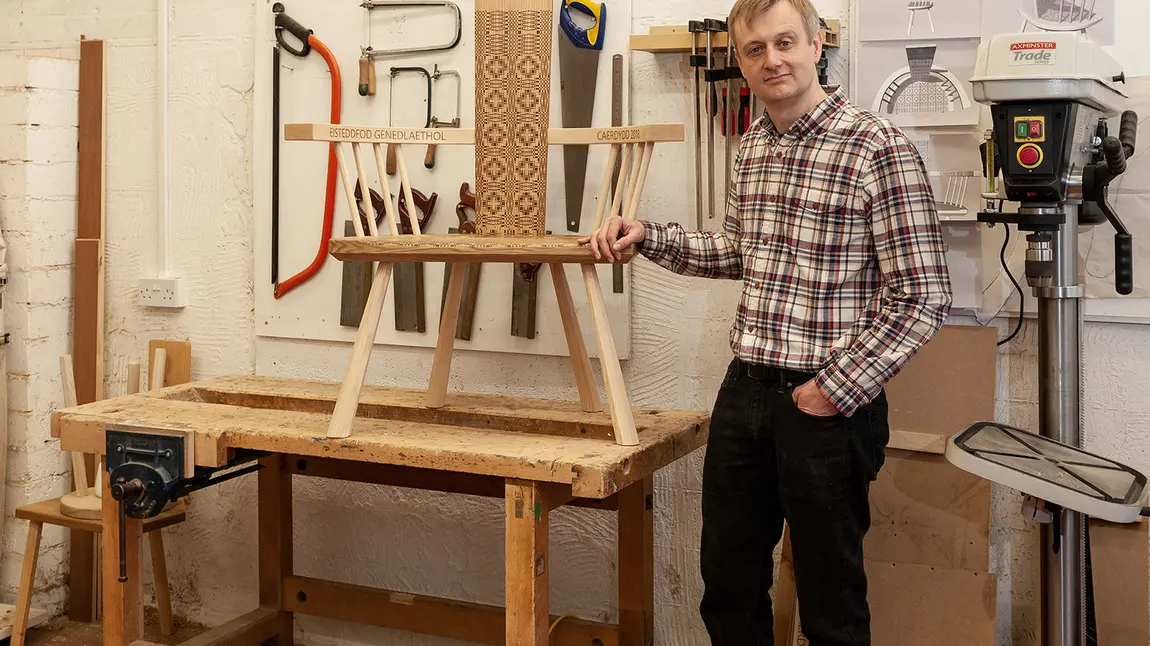Eisteddfod festival to be welcomed by St Fagans National Museum

Thanks to National Lottery players, St Fagans – one of Europe’s biggest open-air museums - is currently undergoing the most significant redevelopment in its history, having received £12.5million; the largest grant ever given by HLF in Wales.
The Eisteddfod’s most prestigious event is the chairing of the bard (‘Eisteddfod’ literally means ‘a sitting’), and this year’s chair has been designed and handcrafted at St Fagans’s brand new Gweithdy workshop. Amazingly, this was the very first time that the process of making the Eisteddfod chair has ever been demonstrated and shared with people.
Local sculptor Chris Williams, who created the chair by hand, was inspired by the wooden stick chairs in the museum’s collection. The seat and back on the new chair are lightly engraved with a traditional wool pattern based on a carthen (traditional Welsh blanket) woven at Esgair Moel Woollen Mill - one of the first buildings to have been re-erected at St Fagans in 1952.
A double celebration for St Fagans
Donating the iconic chair to this much-loved festival marks a double celebration for St Fagans in its 70th birthday year, itself about to begin an exciting new chapter in its own history with the completion of a ground-breaking National Lottery project in October.
If you’re in Wales’s capital celebrating the Eisteddfod, why not visit the country’s most popular heritage attraction while you’re there? Thanks to National Lottery players, there’s more than ever to see and do, including a new gallery and workshop in the Gweithdy building, and even more recreated buildings from throughout Wales’s past - like Iron Age farmstead, Bryn Eryr.

